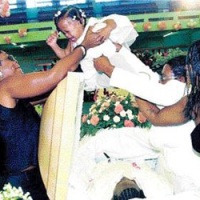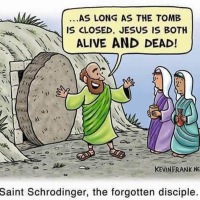Colossians 3 verses 1-11
Luke 12 verses 13-21
The Journey
When I was in Trindad (1979-83), I sometimes had to fly off to attend conferences, go on holiday, and (a couple of times) to provide ministerial cover in the neighbouring Island of Grenada.
Very often at Piarco Airport, there would be small groups – family members – who had gathered to bid farewell to a loved one or loved ones who were going off on holiday or perhaps permanently to foreign shores.
Sometimes, as the departing party made their way toward the Gate, someone from those gathered to see them off would shout out…”journeying mercies be upon you!”
Isn’t that a wonderful phrase? More than a phrase; a hope, a wish. More than that – virtually a blessing!
When I conduct a wedding ceremony, I often use that story to illustrate what we want for the newly-weds as they embark on their marriage journey – a prayer and blessing: “May God bless you as you travel down the years that lie ahead of you. Journeying mercies be upon you!”
It’s not just appropriate for weddings; we could wish the same of the school-leaver or the Graduate as he or she sets off into the workplace or career.
I guess we could use it (though I haven’t – so far!) at a baptism, when the infant begins her or his life as a child of The Way.
I’m reminded of that familiar traditional Gaelic blessing:
May the road rise up to meet you.
May the wind be always at your back.
May the sun shine warm upon your face;
the rains fall soft upon your fields
and until we meet again,
may God hold you in the palm of His hand.
I’ve just heard of the death of a wonderful man, Jamie Stuart, at the age of 96
What an extraordinary journey his was.
His life story reveals he had to survive endemic poverty, endless disappointment and the death of those closest to him. Yet, whenever faced with a real uphill challenge, he’s raced up them. Literally. In this James Stuart’s wonderful life he’s been a champion runner, a blanket salesman, an actor, an aircraft wireless operator, a social worker, a paper boy (at the age of 68) and a best-selling writer……. and, if you didn’t recognise the name at first, then, if I mention “The Glasgow Bible” – the Scriptures written in the vernacular, you’ll know him as the author of that wonderfully accessible work, full of flair, wit, and the insight only a Glaswegian has.
{“Jamie Stuart’s Wonderful Life” – article in the Herald newspaper – can be read here: http://www.heraldscotland.com/arts_ents/13194496.James_Stuart_s_Wonderful_Life/}
However, not all journeys go to plan. There can be obstacles in the way; there may be detours which we would rather not have taken; we find ourselves in cul de sacs; we may end up feeling that we can’t travel another step.
Sometimes we try to make the best of it, often in our own strength. Although we may succeed after a fashion, only occasionally does it reach anything like a satisfactory conclusion.
There are many stories in the Bible of people and tribes who have made the wrong decision. Some have come to the Lord to seek wisdom and direction; others have muddled on, unrepentant and confused.
Jesus gave some sound advice to his followers in the parables recorded in the Gospel of Luke, including the story of the rich man who stored up his abundant crops (today’s RCL Gospel Reading)
The Parable of the Rich Fool by Rembrandt, 1627.
There is, also, for example, the parable of the beggar, Lazarus, and the Rich Man (“Dives”) who wanted to enter heaven, and the one about the Ruler who wanted to inherit eternal life.
They all wanted the ultimate, but their decision was wrong, and they left it too late to make that “U-turn” as it were on their personal journey.
One of the most gifted players ever to grace a football pitch was the great George Best. Sadly, we still remember how booze and birds eroded what was once a remarkable talent.
Doing the rounds of TV chat shows and the after-dinner speaking circuit, he woul tell a particular story against himself.
One evening he recalled, having won a large sum of money at a London casino, he and his then girlfriend, a former Miss World, booked into a luxury hotel.
He then explained how he spread the money – lots of it, in high denomination notes – on the king sized bed, before phoning room service for champagne to be sent up.
The waiter duly arrived. Open-mouthed, he looked in disbelief at all the cash that was spread over the bed. And agog at Miss World draped seductively over a chaise-longue.
Nervously, in a voice that was barely above a whisper, he said: “Mr Best, I hope you don’t mind me asking – but where did it all go wrong?”
An amusing anecdote (but, by the way, I once recounted this tale to an audience largely made up of businessmen and high-flying professionals – and their reaction was….. zilch, zero)
However, there is a lot of truth in that story. George Best’s journey began in humble but essentially decent circumstances, with a decent upbringing in a devout Northern Irish family home. Blessed with a wonderful talent, he could have continued to travel a road accompanied, as it were, by thousands of youngsters inspired by someone who could have been an ideal role model….but….he chose another route that led ultimately to his own self-destruction.
{btw he was reduced to playing for Hibs as he reached the end of his playing days! Said he who is a staunch Jambo}
How often have we seen glittering careers tarnished by self-orientation, self-seeking, self-indulgence. Ruined because of living for the moment.
“Take your ease” said the rich man in Christ’s parable; “Eat, drink, be merry”
Tomorrow never comes – well, actually, it does….and often when we least expect it.
The sad, but obvious, thing is that you can’t take it with you when tomorrow comes. I’ve yet to see a Securicor van as part of a funeral cortège.
The thrust of Christ’s parable should speak to those who want to shop till they drop, those who put getting to the top regardless of the means to climb there, those so involved in the rat race that family life takes a back seat, those who travel on a personal journey that may be temporarily satisfying but leaves no room for the needs of others.
Does it boil down to faith – this journey?
It depends on how we define “faith” – “Seek the things that are above…” writes Paul; “set your minds on things that are above, not on things that are on earth”
It’s all a matter of direction and priorities – as both Jesus in his Parable and Paul in his Epistle indicate.
The choice is ours.
Sometimes, we may miss the obvious route to travel; but sometimes – just sometimes, the Spirit may lead us to a better destination.
A story to finish – it’s about a journey; in this case, a voyage that went “wrong”
In Southern Tasmania, there is a promontory of land on the shore of the Huon River.
On one side is Castle Forbes Bay, named after the Irish ship “The Castle Howard”
In 1836, the Captain mistook the entrance of the Huon River for that of the Derwent River a few miles farther along the coast.
The Derwent led to Hobart Town, his destination, one of Australia’s finest deep water ports, and an important centre for the whaling trade.
From the census of the previous year (1835) Hobart Town contained 13,826 inhabitants, and the whole of Tasmania 36,505.
But they missed it; things got worse when sickness broke out on board, and fresh water was running out.
A terrible miscalculation on the ship’s journey.
They made landfall – miles from their original destination – and set up camp.
But there was no drinking water there, and the passengers were suffering.
However, after a while, desperately scouting the area, a fresh water rivulet was discovered.
They erected tents to hospitalise the sick passengers….. and to this day the area is known as Hospital Bay.
Although they settled this place by default, many of the female passengers remained and married the local timber workers.
And they prospered and many of their descendants still live in or around there.
Not all journeys may go to plan…..but God has plans for all our journeys.
May journeying mercies attend you all, wherever your life-travel takes you!






































